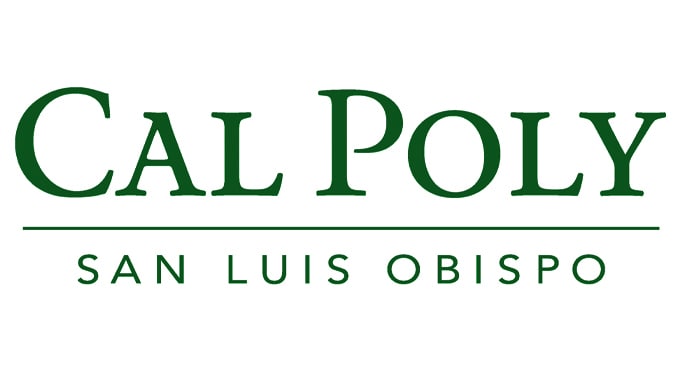
Cal Poly student Mitchell Keller, of Paso Robles, Calif., (left) helps students from University of Malta and Harvey Mudd College hand off an automated underwater vehicle to professor Chris Clark, of Harvey Mudd College, and Cal Poly student Kolton Yager from Murray, Utah. The group later performed mapping a visualization of a known shipwreck, the HMS Maori, in St. Elmo Bay, Malta.
A year after Zoë Wood and her students found a sunken World War II bomber, the Cal Poly computer science professor has brought a new team to the Mediterranean Sea, hoping technology they developed will help them discover more hidden history.
Wood and three students are currently in Malta; a postcard-worthy island 50 miles south of Sicily that is rich with history and culture. It’s also a mecca for divers seeking sunken ships, some of which date back centuries. This marks the third and final year of a $250,000 National Science Foundation-funded project pairing the Cal Poly contingency with Christopher Clark, from Harvey Mudd College in Claremont, California, and Timmy Gambin, a professor at the University of Malta. During the four-week trip, the group wants to find wrecks and then use an automated underwater vehicle to collect data that will allow them to generate 3-D digital reconstructions.

Kolton Yager (left) navigates an automated underwater vehicle through the rocky shore as a student from Harvey Mudd College and Mitchell Keller (right) help guide him.
“I’d be most excited to find something from before World War II,’ said Kolton Yager, a Cal Poly computer science student from Murray, Utah. “Ships have been crossing the Mediterranean for centuries, but it’s not often that something truly ancient survives lifetimes on the bottom of the sea.”
Yager is joined in the expedition by fellow Cal Poly students Bonita Galvan, a software engineering student from San Antonio, Texas, and Mitchell Keller, a computer science major from Paso Robles, California.
Through the centuries numerous ships have capsized in the area as a result of turbulent seas, storms and big swells. While most marine archaeologists have explored those shipwrecks through diving, that can be dangerous. The torpedo-shaped AUV, however, can explore deeper depths than typical scuba divers — around 330 feet.
The team uses sonar and a GoPro camera to record data and images.
Last year, Wood and her students found a rare British warplane that had made an emergency on-the-water landing during World War II. This year’s team began by mapping and visualizing known wrecks and surveying coastal regions. Meanwhile, they have made some modifications to the AUV.
“The technology we are developing could be used generically for underwater exploration using sonar and video,” Wood said. “So everything where ocean survey and management might be useful, then our algorithms and methodology should be useful.”
That could apply to inspecting oil pipelines, homeland security uses and other oceanographic study.

Cal Poly students Bonita Galvan from San Antonio, Texas (center) and Kolton Yager (left) prepare an automated underwater vehicle with a student from Harvey Mudd College during a day of exploration off the coast of Malta.
Each day begins with the team packing and placing the robot into the water — a delicate process, as they have to guide the AUV, with its specialized equipment, through rocks. Once that is deployed, the team works on the digital side of the project, which includes photogrammic reconstructions of wrecks they are visiting as well as marking points of interest in the sonar data.
“Most days leave me totally exhausted by the end,” Yager said, “but the work is so rewarding and the things I get to experience are so thrilling that I can’t possibly complain.”
Like a movie, he added, the experience is action packed and surreal. Not to mention, they’re on Malta.
“Everywhere I go, I find a blooming aquatic ecosystem,” he said. “I’ve seen many brightly colored fish, crabs, clams, coral, entire schools of fish, and one small moray eel, all just from walking down the street and jumping in the water.”
Wood has been to Malta with students seven times in the past eight years.
“The most rewarding part for me is seeing students grow exponentially when faced with an international setting and real-world engineering problems,” Wood said. “Doing field work means all kinds of things can go wrong, and all kinds of things have gone wrong, which provides just incredible learning opportunities.”
The project falls under the umbrella of Cal Poly’s International Computer Engineering Experience program, which provides students an opportunity to apply their technical knowledge in an international context, to further their research education and to increase global citizenship across campus.
You can follow the group’s adventures on their blog at icex2018-malta.blogspot.com/.

